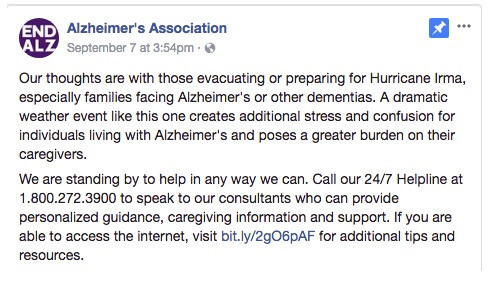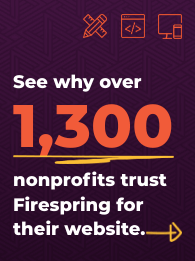In recent weeks, the United States has experienced a multitude of severe natural disasters. From raging fires in the Northwest states to two different hurricanes and flooding in the South and Southeast, millions of people have lost their homes, belongings and even loved ones.
As a nonprofit organization, your heart undoubtedly breaks for those suffering. You want to help as much as you can, but you also recognize the sensitive situation. You have your own constituents and clients to care for. You have your own cause and mission to focus on. You also don’t want to be insensitive and overbearing when asking for donations or volunteers during a nationally public time of grief.
So, what can you do? Do you continue on with regular fundraising efforts, or do you stop progress all together? Today, we dive deeper into the current national situation in the United States and offer up five tips for fundraising for your nonprofit after a natural disaster.
1. Evaluate your circumstances.
First and foremost, your nonprofit organization (NPO) wants to evaluate its circumstances. Where are you located geographically? Are you close to any natural disasters? Are any sister organizations close to the disasters? Are any of your volunteers or donors geographically close? Discuss your circumstances with board members and other decision-makers to determine where your organization stands and to be sure you do not overlook anything.
Your current circumstances will likely play a major a role in deciding how best to respond to the disasters. If the organization exists extremely close to the problem, then you may want to address the issue immediately. However, if your organization and constituents are not close at all, you may take a different approach. Collaborate within the organization to have a full understanding of the nonprofit and how your current circumstances are impacted.
2. Identify how your cause aligns.
Along with physical circumstances, you want to consider how your cause aligns with disaster relief efforts. For example, if your organization’s mission focuses on providing relief after disaster occurrences, this serves as an opportunity to demonstrate your work. Share information with constituents about your team, your groundwork or the fundraising efforts you put together. Keep your efforts up in the future as areas continue to require assistance.
If your cause does not immediately align well, look into other ways your mission may reflect or support the victims of natural disasters. For instance, if you work in finding supportive housing for homeless individuals, this could be an opportunity to discuss how disaster displacement reflects and can even lead to homelessness. Identify areas where your cause may align and use those to start conversations with potential constituents about the issues. If no areas come up, be careful not to overstretch. Make sure your connections make sense, rather than trying to stretch and seem disingenuous.
3. Weigh your options.
When it comes to the actual response your nonprofit takes, you have two main options: (1) Keep moving forward with your regular fundraising activities as usual or (2) temporarily stop fundraising. Neither of these choices seems entirely ideal, so it’s best to weigh your options and decide which one makes the most sense for your nonprofit organization.
If the natural disaster occurs particularly close to your NPO’s physical location or mission, it makes more sense to temporarily pause your fundraising efforts and focus on the current situation at hand. However, if the disasters are not close to your area or related to your cause, it probably makes more sense to keep moving forward with business as usual. However, tread lightly in this situation, and remember to be sensitive.
4. Be sensitive.
The last thing you want is to unabashedly ask donors and volunteers for help at your organization while people are on national television losing their homes and loved ones. However, there is a way to continue on with your efforts respectfully. While the disaster devastation is very real, your mission still matters. Constituents understand this.
During times of tragedy, donors and volunteers have no problem finding a way to give or an organization to volunteer with. But this does not mean once they get involved with one cause, they finish helping altogether. Use this momentum by being sensitive in your fundraising efforts, but still channeling your constituent base to your cause.
Examples of this can be seen through social media in particular. For instance, check out this post by the Alzheimer’s Association:

Here you can see the organization sympathizes and shows sensitivity to the natural disaster happening in Florida. They relate the issue to their cause and demonstrate why it matters to them. They then offer support to those affected, while still directing viewers back to their focus. Show sensitivity at these times, while still explaining why your cause matters.
Refocus, but don’t forget.
When the natural disaster has subsided and communities affected are on track to rebuild, be sure to refocus on your organization specifically, but don’t forget about what happened. Refocusing too quickly can also make you seem insensitive or uncaring. Especially if your NPO relates to the issue at all, be sure to check back in in a few months and discuss the efforts of rebuilding or how things are going in the affected communities.
Recent natural disasters have proved tragic for many Americans who lost property, belongings and loved ones. Responding as a nonprofit organization during times like these can be difficult, but not impossible. Follow some of these tips to decide what’s best for your nonprofit as you move forward through these next few months.
Want to learn more about how to build a successful and effective nonprofit? Firespring can help. We offer helpful materials, webinars and seminars on how your nonprofit can market itself to further its cause. Find out more by calling 877.447.8941 or email hello@firespring.com.

